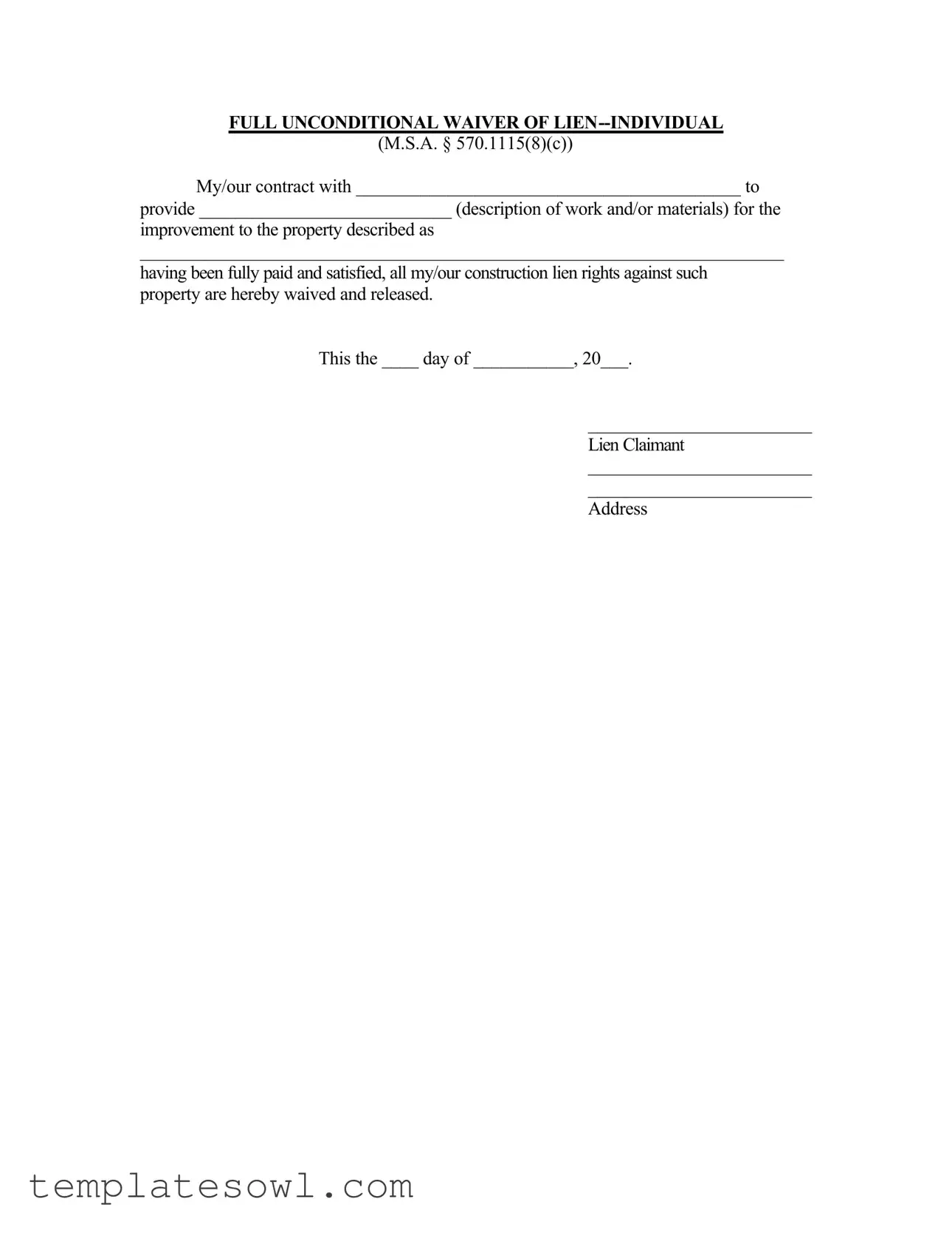What is the "Full Waiver of Lien" form?
The "Full Waiver of Lien" form is a document used by contractors, subcontractors, or suppliers to waive their right to file a lien against a property after receiving full payment for services or materials provided. It serves as confirmation that the lien claimant has been paid in full and is relinquishing any claim against the property for the work done or materials supplied.
Why is the Full Waiver of Lien important?
This form is crucial for protecting property owners from future claims. When a property owner receives a Full Waiver of Lien, they can be assured that the contractor or supplier has been compensated. This minimizes the risk of anyone later asserting a claim against the property, which could result in financial and legal challenges for the owner.
When should I use the Full Waiver of Lien?
The form should be utilized as soon as you have received complete payment for the work or materials provided. It is advisable to exchange this waiver for payment, ensuring that there is a record of the transaction confirming that lien rights have been waived.
Who needs to sign the Full Waiver of Lien?
The lien claimant, which is typically the individual or business that completed the work or supplied the materials, must sign the Full Waiver of Lien. Additionally, if multiple parties are involved in providing services or materials, each party may need to sign the waiver to ensure that all lien rights are released.
What happens if I do not use a Full Waiver of Lien?
If you do not use one, there remains a risk that the contractor or supplier may later claim a lien against your property for unpaid services or materials. This could lead to legal disputes, additional costs, and potential complications when trying to sell or refinance the property.
Is the Full Waiver of Lien legally binding?
Yes, once signed, the Full Waiver of Lien is a legally binding document. It indicates that the lien claimant waives their rights to file a lien against the property for the specific work or materials related to the payment received.
Do I need to file the Full Waiver of Lien with a government office?
Generally, it is not required to file the Full Waiver of Lien with a government office. However, it is crucial to keep a copy of the signed waiver for your records, as it serves as proof of payment and waiver of lien rights should any disputes arise in the future.
How does the Full Waiver of Lien differ from a Partial Waiver of Lien?
A Full Waiver of Lien releases all lien rights upon receiving full payment, while a Partial Waiver only waives lien rights for the amount specified and may indicate that further work or payments are still owed. It is important to choose the correct form based on the payment situation.
Can a Full Waiver of Lien be revoked?
No, a Full Waiver of Lien cannot typically be revoked or undone after it has been signed, provided that the payment has been made in full. It is a conclusive agreement that protects property owners from future claims related to the specific work or materials associated with the waiver.
What information is required to complete the Full Waiver of Lien?
To complete the Full Waiver of Lien, you will need to fill in the name of the contractor or supplier, a description of the work or materials provided, the property description, and the date of the transaction. This ensures clarity regarding the services rendered and assists in preventing disputes.
